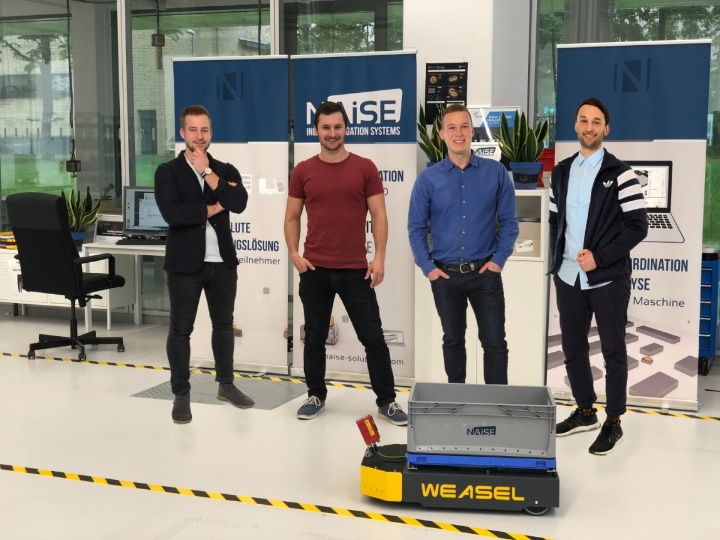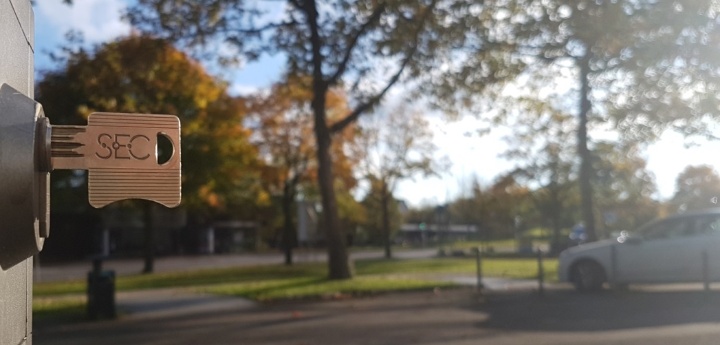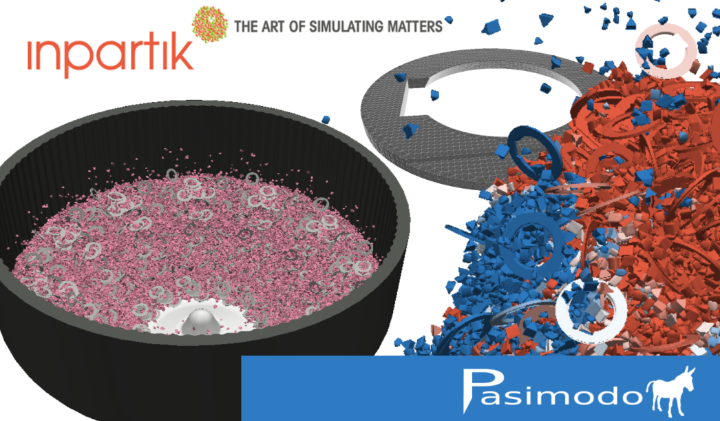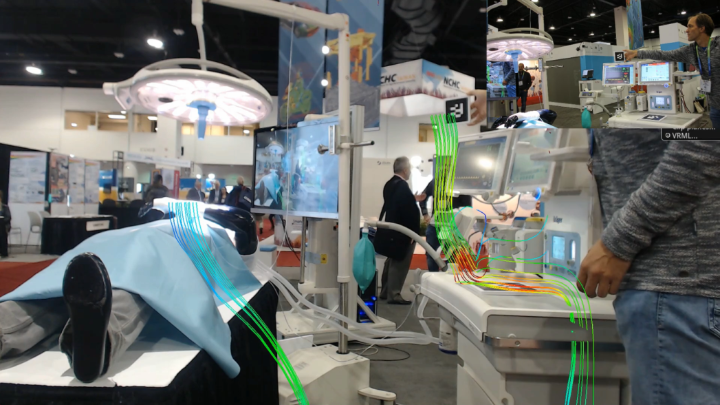In 2018 the world’s largest trade fair for information technology is starting for the first time this summer with new topics, new formats and a new design and will be opening its doors from 11th until 15th June. The University of Stuttgart will be using the new “event platform” divided into three flagship events and demonstrating to the international trade fair public with their innovative exhibits that they are developing intelligent solutions for digitalization comprising all areas of society through scientific-technological cutting edge research. As in the previous year the University is a co-exhibitor at the “Baden-Württemberg joint stand“ (Hall 27, Stand H 21).
With a view to the fair commitment of the University at the radically transformed CeBIT 2018, Professor Wolfram Ressel, Rector of the University of Stuttgart, underlined the necessity of an academic start-up culture and said, “We are delighted that the organizers of CeBIT are addressing young start-ups in particular in reorganizing the fair format. The spin-off companies of the University that will be exhibiting at our stand, for example, stand for the entrepreneurial spirit that will characterize the University of Stuttgart even more in future and not only in the digital field.“
Besides the high-tech start-ups NAiSE and Inpartik, the Stuttgart High Performance Computing Center (HLRS) and the Institute of Information Security (SEC) founded in 2017 of the University of Stuttgart are some of the players at the stand.
Highlights of the trade fair presence CeBIT 2018
NAiSE GmbH – Autonomous Intralogistics
The high tech start-up NAiSE was founded with the vision to equip the factory of the future with maximum transparency and flexibility. This is provided by a wholistic solution for the global navigation and collective coordination of all intralogistical participants: From humans to goods and mobile robots – NAiSE enables simultaneous collaboration on the same floor. One of our core competencies is the free and autonomous navigation of Automated Guided Vehicles (AGVs) as well as the harmonization of the flow of goods via Swarm Intelligence. Additionally, warehouse managers receive all relevant information in real-time about the movement of goods, vehicles and staff on their premises.
With NAiSE customers can optimize processes in real-time, transport goods autonomously, increase security and reduce costs.
http: /www.naise.xyz
Institute of Information Security (SEC)
The Institute of Information Security (SEC) of the University of Stuttgart, newly founded in 2017, shows current developments in security research: secure single sign-on systems, provable security for blockchains, progress in the field of electronic elections and other topics. Discuss questions such as: How do you analyze web security comprehensively and in depth these days? How can “security” be guaranteed for smart contracts? How secure are protocols in the IoT and automotive sector? How can the requirements of the GDPR be implemented with Differential Privacy?
The staff of the Institute of Information Security will also be available at the booth for information on industrial cooperations.
http://sec.uni-stuttgart.de
Inpartik
The HP3-Mole, a highly specialized temperature measurement device of German Aerospace Center (DLR) is currently in flight on board of NASA-mission InSight on its way to Mars. Upon arrival in November 2018, it is going to measure the temperature profile several meters subsurface. By this means, it will be possible to answer complex questions about the genesis of the planet.
Throughout the development of the HP3-Mole, DLR trustingly relied on the multiple features of the special purpose software Pasimodo of Inpartik, a start-up of the University of Stuttgart.
Apart from that, based on ample experience from multdisciplinary research and development, Inpartik provided advice regarding modeling of the Mars soil and the optimization of the energy efficient impellent that is exclusively driven by solar power.
With Pasimodo as a unique tool, it is also possible to investigate the complex interaction between granular matter, fluids and machine parts in terrestrial applications.
At CeBIT Inpartik will provide spectacular insight into the manifold fields of application of the particle simulation software Pasimodo that was developed in cooperation with the cluster of excellence SimTech.
The High-Performance Computing Center Stuttgart (HLRS)
The High-Performance Computing Center Stuttgart (HLRS) was established in 1996 as the first German national high-performance computing (HPC) center. As a research institution affiliated with the University of Stutttgart and a founding member of the Gauss Centre for Supercomputing, HLRS provides HPC services to academic users and industry. We operate leading-edge HPC systems, provide training in HPC programming and simulation, and conduct research to address key problems facing the future of supercomputing, Among our areas of expertise are parallel programming, numerical methods for HPC, visualization, grid and cloud computing concepts, and data analytics.
At CeBIT this year, HLRS presents an Augmented Reality visualization of airflow in an operating theatre, developed in collaboration with medical technology company Dräger that combines augmented reality and airflow simulations running on a supercomputer. The visualizations are enabling Dräger to design medical instruments in ways that reduce return airflows from unclean areas of an operating room, decreasing the risk of bacterial infections in patients’ wounds.






